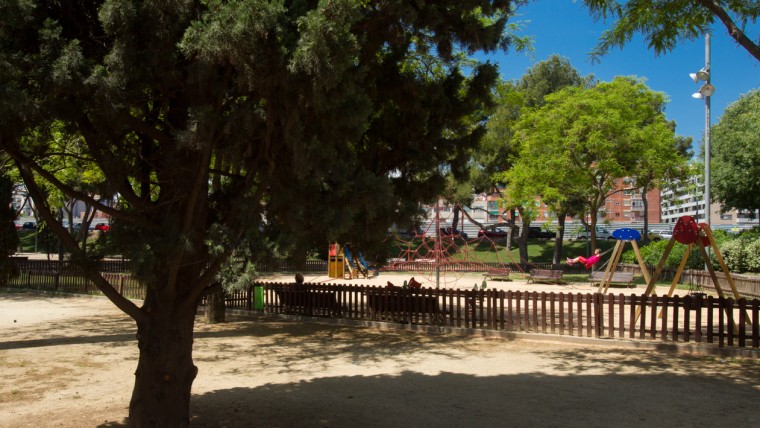
Despite being an open park, there is a sort of main entrance at the end bounded by C/ Ferran Junoy and C/ Sant Adrià. From here visitors can admire the whole park in all its glory, which is worth doing, as it allows you to appreciate the sober and harmonious layout of the two areas it is divided into.
These are separated by a spacious strip paved with reddish tiles, with large grass parterres full of trees on both sides. There is a large elongated sheet of water shaped like an orange segment at the centre which divides the park and gives order to its structure.

History
The park lies on land formerly occupied by the factory of La Maquinista Terrestre y Marítima, a company founded in 1855 that built train engines. Their first factory was in Barceloneta but they moved to Sant Andreu in 1920 and from there to Santa Perpètua de Mogoda in 1993. The company was involved in building the mainline railway station Estació de França and Sant Antoni Market, both of which have a wrought-iron structure.

Art and Architecture
One of the ends of the Narcís Monturiol pond is delimited by a metallic structure in the shape of a vessel with a sharp “prow”, alongside original-design street lamps that cross the centre of the park from end to end. A large wheel in the “stern”, the pond, and inside the water, recalls the industrial past of the land that is now a park. The building houses the La Maquinista i Macosa Museum which keeps historical documents, maps, photographs, models and historical items that belonged to the company.
-
- Phone number
- Tel.: 010
-
- Titularity
- Public center
- Address:
- Passeig de l'Havana, 2 - 4
- Districte:
- Sant Andreu
- Neighborhood:
- el Bon Pastor
- City:
- Barcelona

